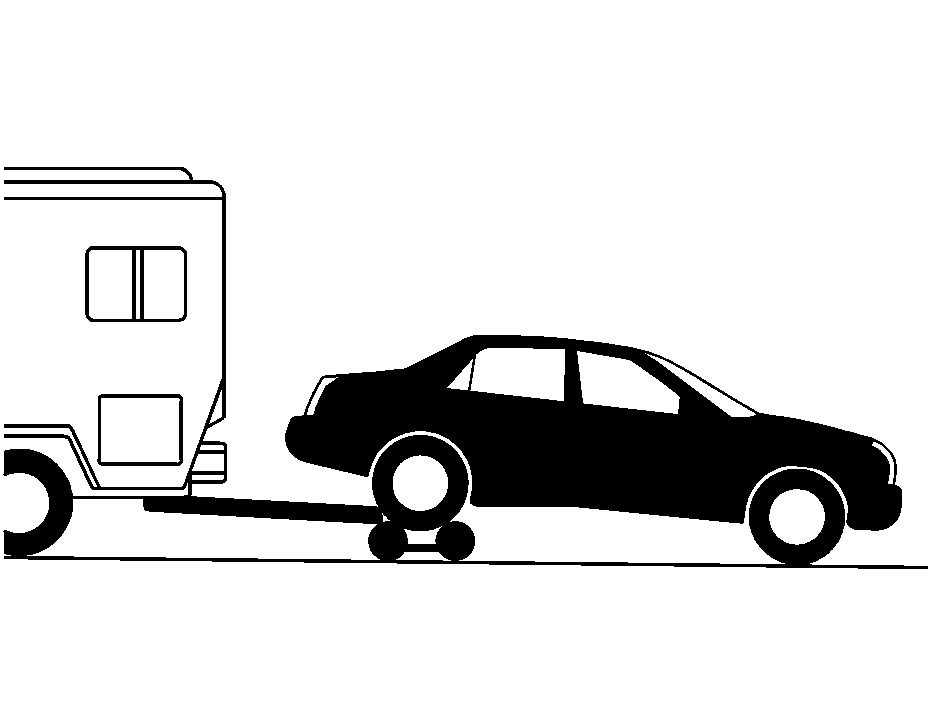Recreational vehicle towing means towing your vehicle behind another vehicle - such as behind a motorhome. The two most common types of recreational vehicle towing are known as "dinghy towing" (towing your vehicle with all four wheels on the ground) and "dolly towing" (towing your vehicle with two wheels on the ground and two wheels up on a device known as a "dolly").
With the proper preparation and equipment, many vehicles can be towed in these ways. See "Dinghy Towing" and "Dolly Towing," following.
Here are some important things to consider before you do recreational vehicle towing:
| • | What's the towing capacity of the towing vehicle? Be sure you read the tow vehicle manufacturer's recommendations. |
| • | How far will you tow? Some vehicles have restrictions on how far and how long they can tow. |
| • | Do you have the proper towing equipment? See your dealer or trailering professional for additional advice and equipment recommendations. |
| • | Is your vehicle ready to be towed? Just as you would prepare your vehicle for a long trip, you'll want to make sure your vehicle is prepared to be towed. See Before Leaving on a Long Trip . |
Dinghy Towing
Notice: If the vehicle is towed with all four wheels on the ground, the drivetrain components could be damaged. The repairs would not be covered by the vehicle warranty. Do not tow the vehicle with all four wheels on the ground.
Your vehicle was not designed to be towed with all four wheels on the ground. If your vehicle must be towed, see "Dolly Towing" following for more information.
Dolly Towing

If your vehicle is a rear-wheel drive, it can be towed using a dolly. If you have an All-Wheel-Drive (AWD) vehicle, it can only be towed on a flat-bed trailer. To tow your vehicle using a dolly, follow these steps:
- Put the rear wheels on the dolly.
- Put the vehicle in PARK (P).
- Set the parking brake and then remove the key.
- Clamp the steering wheel in a straight-ahead position with a clamping device designed for towing.
- Release the parking brake.
